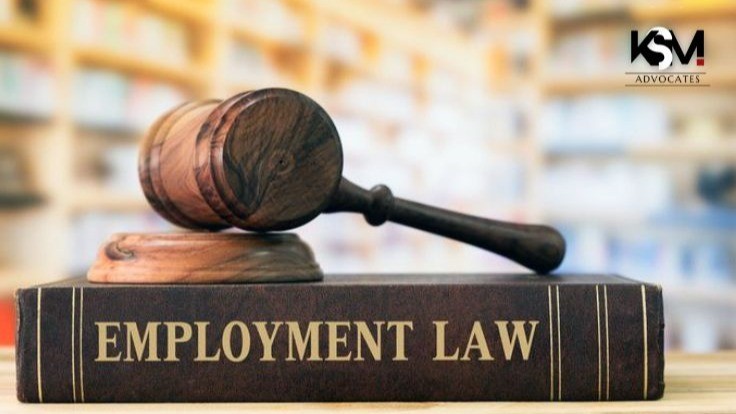Since 2014, Kenyan courts have marked a significant shift from the statutorily defined standard of "fair dealing" to the judicially developed doctrine of "fair use", as first evidenced in the landmark CCK case. This analysis examines whether this shift has been correctly applied.
Introduction
The shift is noteworthy when compared to jurisdictions like the United States, where fair use has been deeply embedded in copyright jurisprudence for decades. The comparison with U.S law is quite instructive given its more developed intellectual property framework, and its extensive body of case law that provides persuasive authority for understanding the correct application and function of fair use in copyright matters.
A Modern Example: Sedlik v. Von Drachenberg
To illustrate the complexities of fair use analysis and its distinction from fair dealing, consider the most recent U.S case of Sedlik v. Von Drachenberg. It is frequent and normal for many people to get tattoos based on their idols as fixated in popular photographs, or other similar depictions by artistic individuals. What's not so common in the minds of these persons, as well as their renowned and skilled tattoo artists, is that such actions may constitute infringement of a copyright.
The Case Background
In 2017, Kat von D (Katherine von Drachenberg) posted a photo displaying a tattoo she had inked for her friend Blake. The tattoo was a reproduction of a photograph taken by Jeffrey Sedlik, a professional photographer, depicting the famous jazz musician Miles Davis—notably a creative work whose copyright is owned by Sedlik.
While Sedlik's photograph was undisputedly utilized to create the tattoo, the United States' Central District of California found that the tattoo was not substantially similar to Sedlik's protected photograph and thus did not infringe on any of his rights.
The Warhol Standard
Despite the seemingly conclusive nature of the case, it has been recognized as affirming the Warhol standard of fair use. Specifically, this standard establishes that despite a work's evident substantial similarity, fair use analysis must consider whether the allegedly infringing work is substantially the same in purpose and character as the original.
Crucially: If the secondary work affects the use of the original work in the primary or secondary market, then it cannot qualify for the fair use defense.
Fair Use vs. Fair Dealing: Understanding the Distinction
Fair Use (U.S. Approach)
Fair use, as applied in the U.S., is a limitation on the rights in works of authorship granted by copyright law. It permits secondary work uses that would otherwise constitute infringement if they differ from the original work in several key areas:
1. Purpose and Character of Use
Requires transformative use of the secondary work—whether it adds new meaning, message, or expression.
2. Nature of the Copyrighted Work
Whether factual or creative—with stronger protection afforded to creative works.
3. Amount and Substantiality
Assesses whether the appropriated parts were reasonable in relation to the purpose.
4. Market Effect
Evaluates whether the secondary use harms the market for the original work or its derivatives.
Fair Dealing (Common Law Jurisdictions)
Fair dealing is used in most common law jurisdictions and permits such uses if they fall within statutorily defined grounds (see Second Schedule of the Copyright Act 2001).
Key Distinction: Fair use is broad and flexible, while fair dealing is restrictive and prescriptive.
The CCK Case: Kenya's Pivotal Shift
Background
The CCK case arose from the largest free-to-air (FTA) broadcasters' claim that the Kenya Information and Communication Act's Broadcasting Regulations, through the "must carry rule," gave rise to infringement of their copyrighted broadcasts by permitting re-broadcasting.
The "Must Carry Rule"
The rule, a regulatory mandate, requires signal distributors and digital broadcasters to carry a prescribed minimum of local Kenyan channels without prior consent, to promote public access to local content and ensure availability of diverse programming on all platforms.
The Court unanimously held that the 'must carry' rule fell under the fair dealing provisions of the Copyright Act, reasoning that 'broad limitations and exceptions integrated into the copyright system safeguard public interest.'
The Problem with the Court's Analysis
It has since been widely and credibly argued that the Court's finding is untenable, and is rather indicative of the fact that the test applied was fair use. To qualify as fair dealing:
- The copyrighted material must be used for the purposes provided under the law, and
- The use must be fair.
The finding that the rule permits such uses that facilitate public access to information for the public interest is not remotely similar to any of the grounds prescribed in Section 26(1)(a) of the Act—namely, scientific research, private use, criticism or review, or the reporting of current events subject to acknowledgement of the source.
How the CCK Court Applied the Test
The Court relied on the Supreme Court of Canada's CCH Canadian Ltd. v. Law Society of Upper Canada, which established six criteria:
The Six-Factor Analysis
- Purpose of Dealing: To ensure public access to information
- Character of Dealing: Programs were merely rebroadcasted or retransmitted
- Amount of Dealing: Quantity not determinative; content served public interest
- Alternatives to Dealing: Alternatives existed to the must carry rule
- Nature of Work: Broadcasts meant for public consumption
- Effect on Work: Retransmission did not compete with original broadcasts
The Correct Approach to "Fairness"
Purpose and Character: The Campbell v. Acuff-Rose Standard
Under fair use, purpose addresses the reason or aim for which the secondary work appropriates the copyrighted work—for instance, commentary, research, criticism, and other such objectives—in relation to the purpose of the original work.
The Campbell Test
In Campbell v. Acuff-Rose, the Court held that this inquiry concerns "whether the new work merely 'supersedes the objects' of the original creation, or instead adds something new, with a further purpose or different character, altering the first with new expression, meaning, or message."
Regarding character, the Court held that this factor relates to the degree of transformation of the secondary work as compared to the original work, in a manner that can reasonably be perceived to give the secondary work a new message, meaning, or expression.
The Warhol Refinement: Purpose and Market Effects
In Warhol, the Court noted that even if the character is distinct and meets the relevant degree of transformation, when the purpose of the secondary work is similar to that of the original—in a manner that positions it to compete in the same market—then this is sufficient to weigh against fair use.
Key Principle: If both works share commercial purposes and operate in the same market, similarity in purpose and market impact negates any transformation and renders the use an infringement.
CCK's Critical Errors
Three Fundamental Misapplications
Error #1: Purpose Analysis
The Court failed to distinguish the purpose of the retransmissions from that of the original broadcasts. The original broadcasts were commercial (media houses), while the must-carry rule's purpose was non-profit public access.
Error #2: Character Analysis
The Court incorrectly viewed character as informed by "custom or practice in a particular trade or industry" rather than examining the degree of transformation.
Error #3: Market Effect
While largely correct, the Court should have determined this based on purpose—that the must-carry rule expands reach rather than competing with original broadcasts.
Legacy of Misapplication: The Lens Eye Images Case
Case Background
In Lens Eye Images Limited v. Mediamax Network Limited (2023), the plaintiff owned copyrights to two photographs:
- First photograph: Of Felix Oloo (renowned coach), given to Oloo with agreement not to share
- Second photograph: Rugby players celebrating, posted on plaintiff's Instagram
The defendant published these images in People Daily newspaper, on social media, and on its website without permission or payment. The defendant invoked fair dealing, asserting use for information and reporting current events.
The High Court's Flawed Analysis
The High Court, citing CCK, made several critical errors:
Fundamental Mistake: Conflating Purpose and Character
The Court made no distinction between purpose and character, instead finding that these relate to either commercial or non-commercial use. This treats purpose and character as a single inquiry rather than separate analytical elements.
The Market Effect Error
The Court held that publication did not prejudice the plaintiff's use since they had already enjoyed the right of first publication. This treats copyright as consisting solely of the right to first publication and fails to consider the right to commercialize use of photographs to third parties with consent.
As seen in Brammer v. Violent Hues Productions LLC, this narrow view ignores that copyright includes the right to license and commercialize the work beyond initial publication.
Three Critical Patterns of Misapplication
Pattern 1: Commercial Use
Courts accept defendants' claims of public benefit purposes while ignoring indirect commercial advantages. In Lens Eye Images, accepting that use was to inform the public ignored potential business benefits like brand equity growth and future revenues.
Pattern 2: Character/Transformation
Courts sidestep analysis requiring meaningful transformation. In Lens Eye Images, the Court did not consider whether use involved new meaning, message, or purpose—it was mere reproduction.
Pattern 3: Market Displacement
Courts unjustifiably confine harm analysis to narrow considerations. In Lens Eye Images, finding no market harm because plaintiff exercised first publication rights erroneously restricts copyright to that single right alone.
Implications for Creators and Copyright Holders
The Consequences of Misapplication
The implications are that reproductions, or other such adaptations and their uses, stand to deprive duly entitled authors and creators of works of the protection and benefit they deserve, given the courts' failure to:
- Critically consider commercial uses - including indirect commercial benefits and brand value
- Require transformation - that the character of the secondary work meet some degree of transformation
- Properly assess market displacement - beyond narrow actions like right of first publication
The Correct Factual Inquiry
What Courts Should Examine
The proper factual matrix must examine:
- Whether the alleged infringing work exploits a market that the original creator has a protected right to control
- Whether such exploitation constitutes mere free-riding on the original creator's efforts and creativity
- Whether it captures profits that should equitably belong to the original creator as an essential incentive for creative endeavours
This is arguably the core rationale of IP rights—to incentivize creativity by ensuring creators can capture the value of their work.
Practical Guidance for Legal Practitioners
When Advising Clients on Copyright Use
For Potential Users of Copyrighted Material
- Don't rely on broad "public interest" arguments alone
- Consider whether your use truly transforms the original work
- Analyze whether you're entering the same market as the original
- Assess all potential revenue streams affected, not just direct competition
- When in doubt, seek permission or licensing
When Representing Copyright Holders
Building Strong Infringement Cases
- Document all potential markets for your work, including licensing opportunities
- Demonstrate how unauthorized use affects these markets
- Challenge overly narrow interpretations of "market effect"
- Emphasize lack of transformation in the secondary work
- Address both direct and indirect commercial benefits to infringers
Conclusion
Both the CCK and the Lens Eye Images Limited cases have signalled a shift in Kenya's application of the fair dealing standard to the doctrine of fair use when assessing whether uses of a protected work are fair. Despite this shift, the Kenyan courts have failed to fully grasp the standard of fair use as applied in other jurisdictions.
The courts' reasoning demonstrates a profound failure to grasp the core rationale of fair use principles. The arguments advanced regarding the correct approach are not mere moot, as the definition of the fair use test fundamentally shapes the relevant factual inquiry.
Call for Reform: Kenyan courts must either return to the statutory fair dealing framework or properly apply fair use principles by examining purpose, requiring genuine transformation, and comprehensively assessing market effects. The current hybrid approach serves neither doctrine well and undermines copyright protection.
Looking Forward
For Kenya's copyright jurisprudence to mature, the judiciary must engage more deeply with international precedents like Campbell and Warhol, understand the theoretical underpinnings of fair use, and apply the doctrine consistently with its protective purposes. Only then can creators and users both operate with the clarity and certainty necessary for a thriving creative economy.
Legal practitioners have a critical role in this evolution—by rigorously challenging misapplications, educating courts through well-researched submissions, and advocating for principled application of whichever standard the law adopts. The future of Kenya's creative industries may depend on it.



